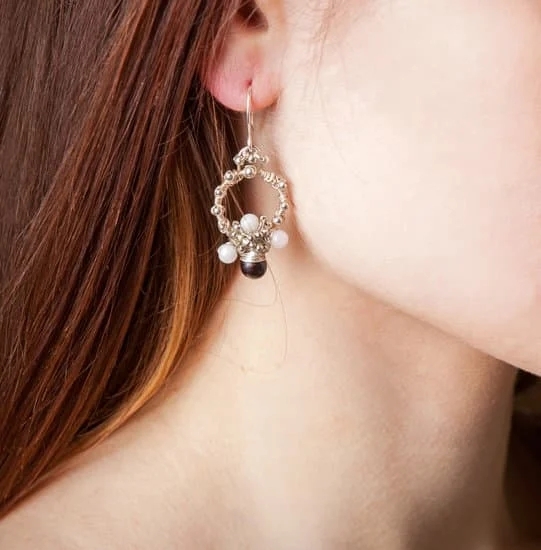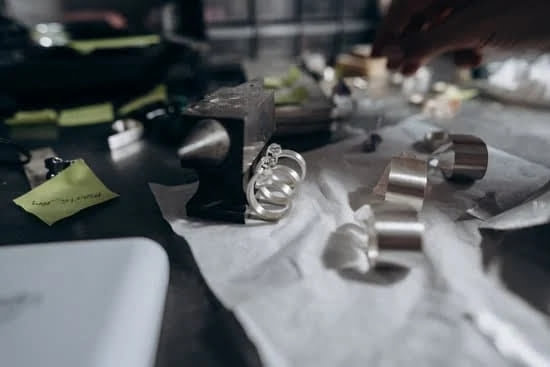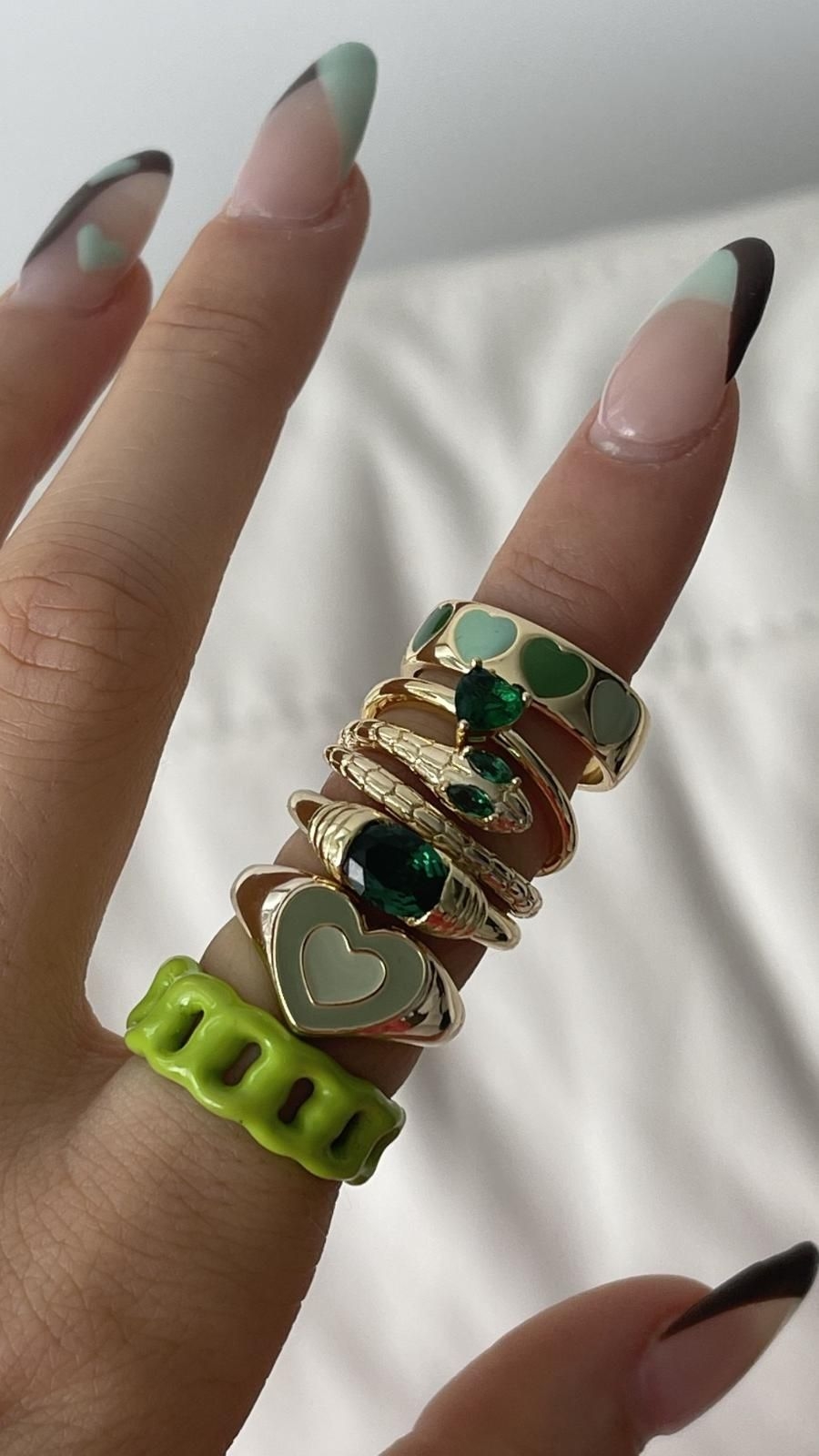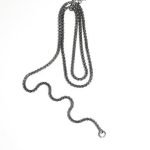In this article, we will discuss how to tell what material jewelry is made from. With a few basic pieces of knowledge and a bit of practice, it is relatively easy to identify the various materials used in making jewelry.
It is important to understand the difference between materials, because different metals and alloys react differently with chemicals and solvents. Knowing what your material is will also let you know the best way to care for it which prevents wear or damage that can occur through incorrect cleaning or storing methods.
Gold: Gold is a soft, malleable metal characterised by its yellow colour. It may be accompanied by other metals like copper or silver which changes its colour slightly but gold will retain its classic colour no matter what other elements it is alloyed with. Gold jewelry is usually marked with the pure gold content such as 10k, 14k etc.
although the stamp may not always be visible if it was made before certain time periods when this level of identification was introduced. To test for gold you may need access to nitric acid as pure gold does not react with other acids such as acidic fruits or topical solutions.
Conclusion
The Visual Test
One of the simplest and easiest methods for telling what material jewelry is made of is to use the visual test. Often when making a purchase it’s not convenient or easy to test, so this visual assessment allows you to quickly determine if a piece is real. To understand how it works, one must first know about color, clarity and shine – the three elements that form the basis of this test.
Color: Precious metals all have different hues and shine, meaning that by taking a clear look at the jewelry you can get some clues as to which metal it is. Gold has a yellow/golden color, silver has its shiny grey-silver hue while platinum shows off its unique white shade. There are more varied colors from metals such as rose gold and gunmetal gray including variations within each, but these serve as good starting points with regards to color.
Clarity: The ‘clarity’ aspect of this visual test focuses on how visible flaws in jewelry, if there are any present at all. Precious metals are known for their lack of blemishes and other issues that typically arise when using lower quality materials such as plated metals or glass beads.
If you take a close up look at your jewelry and find noticeable amounts of flaws – they aren’t something found in authentic precious metal pieces – then this should tell you something significant about the material in question.
Shine: Shine gives us an idea regarding how well a piece has been finished off – another way in which we can potentially tell what is real or not.
As previously stated, precious metals have their own unique hues so this part of the assessment often just centers around confirming that those individual shades exist in whatever piece we’re looking at rather than searching for differences between them and similar things made from lesser materials such as base level zinc alloys (plated items).
Without getting into another elongated discussion about luster, suffice it to say that assessing shine properly when trying to assess jewelry material should be relatively straightforward for most people with practice (or acquired knowledge).
Overall finding out what material your jewelry is shouldn’t be too difficult with some basic knowledge of materials and observational skills when viewing product attributes such as color & choosing clarity & shine. Combined this trio of qualities usually serves nicely as key fundamental signs pointing out toward genuine precious metal products or otherwise lesser quality alternatives like plated versions thereof.
Magnification & Microscopy
If you’re looking to identify an unknown piece of jewelry, one of the most accurate tools for identifying its materials is magnification and microscopy. Magnification consists of using a magnifying loupe and a microscope that use powerful lenses to provide a much higher degree of magnification than the human eye can see.
A 10x loupe will easily allow you to get close enough to examine jewelry materials with proper lighting, allowing you to better identify the type of metal it’s made from, or any possible stones or accenting set in the piece.
The most basic use for magnification tools is determining whether something on your jewelry is gold; silver; platinum; or alloys including copper, brass, and steel. For gold, unlike silver or platinum pieces, careful scrutiny at 10x magnification shows tiny granules visible on smoothly polished surfaces that give away its tell-tale yellow hue and identifying characteristics.
Using gentle pressure while viewing can also let you determine if your pieces contain softer metals like copper, nickel or brass alloys or stainless steel typically found in fashion jewelry designs. With less expensive items you’ll want to check they haven’t just been sprayed or plated with a thin layer of gold instead of being solid gold throughout as well.
Using both methods together can often yield better results than either alone would yields on its own and with practice it should be easy to tell where materials like semi-precious gemstones have been used as accents for more valuable rings and necklaces over time.
By looking at a given item carefully under multiple levels of lens power you should be able to get a better overall picture of what kind of materials have gone into making up the item in question and gain greater control over discerning them from other aspects such as workmanship quality as well.
When making an important purchase, this tool is invaluable for helping establish precise identification notes about an item so that more valuable pieces can confidently be purchased without having guesswork involved in assessing their value ever again.
Weight & Density
Many people imagine that the only way to determine what type of material a piece of jewelry is crafted from is to look at it. However, there are other means by which you can tell what material the jewelry is crafted from by looking at its physical properties such as weight and density. Weight and density are two measurements that allow us to determine the makeup of an object.
Weight, measured in grams or ounces, can provide a quick indicator of the composition of jewelry, especially heavy metals such as gold and silver (relative to lighter materials like plastic). The “heft” of a piece can often give clues as to its composition – gold being significantly heavier than sterling silver or even stainless steel. If a necklace has been crafted with silver, for example, it would be quite lighter than if constructed with 14k or 18k gold.
Density refers to how compact an object’s mass is; for instance, gold weighs more than quartz but has less volume because gold particles are smaller than quartz particles when looking at them under a microscope. Silver and brass have medium densities while aluminum has lower densities and therefore feels light in your hand.
The next step in determining what material your jewelry is made from is examining its luster or shine. Gold will appear bright yellow while silver will be brighter white because it reflects more light due to containing higher amounts of reflecting elements (such as nickel or zinc) compared to gold which contains fewer reflecting elements.
Having this knowledge can also lead us closer towards identifying other precious metals such as platinum – which has an even brighter white hue – or base metals like copper which tend toward redder hues.
As well as visual clues, tactile properties such as malleability should not be overlooked when attempting to identify unknown jewelry pieces: silver tends to bend easily under pressure while platinum will not budge at all due to it being one of the strongest precious metals available on the market today.
Finally, some stones may leave traces upon being rubbed against paper; they may appear rubbery or black meaning they are likely manmade materials made up of various chemicals rather than genuine stones such as diamonds or sapphires.
Sparkle Test
The sparkle test is an easy way to tell what kind of metal your jewelry is made of. Silver has a distinct white shine, and the reflection will have sharp points coming off it. Gold and rose gold tend to be warmer, with softer points.
Copper has a very unique pinkish hue. If you’re not sure what type of jewelry you’re looking at, take it outside in daylight to get the best orientation to its sparkle and color; if you’re indoors under warm indoor lighting, it can make it harder to distinguish the shade of different metals.
To be absolutely certain what sort of metal something is, you can also check for hallmarks or other markings on the piece. You may find everything from a number indicating a karat rating for gold jewelry to the acronym “CZ” for cubic zirconia (a popular diamond alternative).
There are also symbols denoting sterling silver, rhodium-plated precious metals, and more. It’s worth noting that individual designers may have their own personal hallmarks as well; however, if your jewelry doesn’t have any marks at all it’s likely not made of precious metals like gold or silver.
Certain materials also have tactile cues that can help distinguish them from each other. Silver and silver-plated pieces tend to feel cooler almost immediately upon touching them due to their electrical conductivity; whereas items crafted with base metals like brass won’t provide that feeling at all.
Base metals also tend to weigh more than precious metals due to their denser molecular structure; even though they might look similar, there should be a weight difference that could denote things like how much plating might be involved in the manufacture of your jewelry item.
Chemical Testing
There are a few reliable methods in determining the composition of jewelry, one of which is chemical testing. This type of testing requires the use of acids to identify specific metals such as gold, silver, and platinum. It is important to note that being careful when handling acid is extremely important especially since it can cause injury if not handled properly.
Before starting, there are a few pieces of safety equipment you should consider wearing to safely complete this procedure. This includes protective eyewear, gloves and face mask. In order to prepare for this test, you will want to take into account the color and thickness of the jewelry before following these steps:
First begin by mixing together vinegar and table salt into a bowl until they become fully dissolved. Next, submerge part of the piece into the solution for a couple seconds keeping in mind that each metal will react differently with the acid in different ways. For example gold will remain unscathed while silver or platinum might change color upon contact with acid.
Platinum is also known to vary depending on its carat; lower carats appear darkest while higher carats remain untouched upon contact with the acid solution. Furthermore when submerged in some mineral acids copper alloys bronze or brass jewelry can cause bright green sparkles due to copper reacting with the hydrochloric acid used (HCl).
Lastly after removing it from the acid take note any changes or signs that may have occurred such as discoloration or bubbles that formed on top suggesting a reaction happened.
Chemical testing can be very useful in providing accurate information regarding what your piece of jewelry is made out of thus giving you peace of mind knowing exactly what it is worth financially. Knowing what material your pieces are can help you better determine its value which can assist you when making financial decisions about investments related to jewelry purchases.
X-ray Fluorescence Testing
X-ray fluorescence testing is a reliable method of accurately determining the material makeup of jewelry. This technique utilizes high energy X-rays to measure the elemental composition of a sample and determine if it is an authentic or counterfeit item.
The x-ray radiation that is used to perform this type of testing does not cause any harm to the jewelry, as it does not penetrate very far into the item. The process can be performed both from a distance and by contact with the sample being tested.
The results found through X-ray fluorescence provide more precise information than other methods of testing, such as spectrometry or colorimetry. This allows experts in the field to differentiate between common alloys such as gold and silver and rare metals like palladium or platinum in order to make an accurate assessment about an item’s authenticity.
Within the jewelry industry, many manufacturers now employ X-ray fluorescence as part of their quality control processes. This enables them to indicate which items are made with authentic materials and which may be likely fakes due to incorrect labeling or mixing of materials.
The tests can easily uncover problems such as added metals or coatings that were not mentioned on the labels attached to each piece at purchase. This helps ensure consumers that they are purchasing quality pieces without any hidden surprises later on down the line.
Conclusion
Identifying the material that a piece of jewelry is made from can be surprisingly tricky. Although most modern jewelry is marked with the metal used, older pieces often lack official markings. Luckily, there are several ways to determine what type of jewellery you have and how to properly care for it.
First, look for any maker’s marks on the item that could indicate its origin. While these can sometimes give clues as to metal content and make it easier to date the piece, they’re not always reliable sources of information.
Also be sure to watch out for metal content stamps such as sterling silver or gold vermeil which will help identify what type of metal the piece is made from. If there are no stamps, a closer examination may be needed to identify coating or alloys.
Testing the material is another way to test the properties of your jewelry and figure out what it could be made of, although this should only be done by trained professionals in a lab setting who understand potential hazards associated with this method. The most common tests used include scales for weight measurement and acid testing which reacts differently to various types of metals allowing users to confirm or narrow down options for possible materials.
Finally, if you want more information when investigating your jewelry, other resources such as historical records or talking to an antique jeweler might provide further insight into exactly what kind of material was used when making a certain item or help shed light on how an item may have been cared for over generations past.
Knowing how to tell what material something jewellery is made from is vital when deciding whether or not something deserves cleaning or repairs and can help determine insurance value if necessary in case something needs replacing.
Researching more about materials used in jewelry and other crafts over time can provide further guidance towards creating ongoing preservation strategies.

Welcome to my jewelry blog! My name is Sarah and I am the owner of this blog.
I love making jewelry and sharing my creations with others.
So whether you’re someone who loves wearing jewelry yourself or simply enjoys learning about it, be sure to check out my blog for insightful posts on everything related to this exciting topic!





